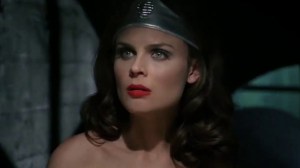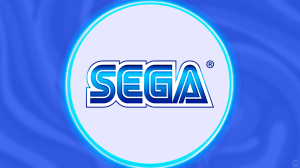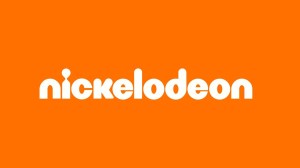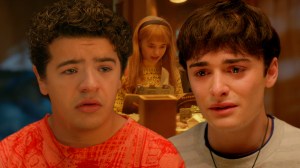Once a movie has a script, the production designer is one of the first crew members brought on to lead the charge in bringing the movie to life. When it comes to Avengers: Endgame, Charles Wood handled all things production design, helping transform the film into the highest-grossing film to hit theaters.
Videos by ComicBook.com
In support of the Avengers: Endgame home media release this week, we spoke with Wood about his time on both Endgame and Avengers: Infinity War and the massive undertaking the two films were. Keep scrolling to see what Wood had to say about designing Avengers: Endgame!
Designing the Biggest Film Ever
ComicBook.com: You’ve been involved with MCU quite some time on a handful of movies, so this definitely wasn’t your first rodeo, right? When did you first understand just how big the scope of Avengers: Infinity War and Avengers: Endgame was going to be?
Charles Wood: I suppose, yeah, right around when I started. Well, through the studio really. They told me not in great detail, but they sort of gave me an idea of what we are facing. We certainly knew the amount of time we were going to need to be in America to make the films, so we were sort of told from the get-go that we’d probably be shooting the films back to back, which is pretty much what we did and then it’s just really a question of just getting on with it.
As a production designer, did you just do everything in one fell swoop or did you actually segment it into Infinity War work and Endgame work?
Yes. We sort of did the two films at once and what I mean by that is, as the two scripts are being developed, we were sort of prepping both films at the same time because, one, Endgame would in some way influence Infinity War and vice versa. It wasn’t really a question of making a film and then making the second film, although that’s how we shot it. As an art department, we were essentially pressing both films at the same time.
Bettering Ideas
Endgame introduces the concept of time travel to MCU and we had places like New York 2012 and the Sanctum Sanctorum. You were on Doctor Strange, so you had plenty of experience with the Sanctum. Was it easier to redesign it for Endgame or, for lack of a better word, was it more challenging? After all, you know these millions of millions of fans are going to pore over it all and point out what’s different from Doctor Strange to Endgame.
Yeah, take the Sanctum Sanctorum as an example of that. At one point, we were considering building a different part of it, but we decided not to, but then you change things up in it. You have the advantage of understanding the palette. You have the understanding of knowing what this world is because you’ve done it. However, strangely enough, we actually rebuilt the foyer. We changed that up in enough in its own right to certainly keep it really interesting and, like everything else, you try and better it on the next one. So there was definitely an advantage of going into both of these films having some background, having done some of the other films in the past as regards to a continuity, I suppose.
Portals
Wat was the most challenging part particularly of Endgame for you? Was there a certain set piece that was the thorn in your side?
Most challenging part of it? I think it was just keeping it all together. It was just keeping it all together because, as in any film, the script changes. There are things that come in and come out to come out of it, so I think it’s just the complexity of keeping it all together would be my answer to you. Working with Joe and Anthony, they are great directors and they’re also lovely to work with, as is the studio. They helped us get through those wobbles. But it was a massive, massive undertaking.
And this kind of ties in to what you just said a little bit. Obviously, you’re reading the script and it’s changing, but then at the end, there’s the portal scene. It’s just incredibly massive, both to the story and for filmmaking in and of itself. Can you walk us through your process from reading such a massive scene to the screen? We have characters from all walks of life, right? And they’re all converging into one.
Yes, the third act was always the one that we … When we were sort of making the film, it was sort of over there on the horizon and we knew we had to deal with it in a very serious way. If the question is how did we tackle that? We tackled that essentially through having a lot of discussions with the studio, breaking each part of it down, breaking each character down and what each character needed to be doing in this scene. It’s like the sort of the coliseum almost of it all and we had to conceptualize each part of it. We basically had to take each character and try and figure out what each character’s mannerisms would have been.
And I certainly know that was also heavily worked on by Dan DeLeeuw and his team as well, the visual effects teams. Because the trouble with something like that, the third act, is it’s such a big piece in its own right and you’ve got so many characters and you’ve got so much story telling that needs to be done, one has to be careful that it follows a storyline. It can become very confusing very quickly I think, so we had to be very careful about how each part was put together.
Vormir & Nidavellir
You mention time travel and then there’s the Quantum Realm, but then there’s also places like Vormir and Nidavellir. All this stuff draws from source material, but Vormir and Nidavellir are both lesser-known locations. Did you really depend on the source material to give you a look and feel?
I mean places like Vormir, my memory of it all was it was more to do really with discussions with the studio is when you do a film like this, because you’ve got many worlds you go to, the first thing you need to do is you need to make sure the audience, you really do take them to a different world. Each one needed to be very different and Vormir, my memory of it all was to certainly talking with the studio and Joe and Anthony was they wanted something much more celestial, much more dreamy. I seem to remember that what we actually did was we looked at the Atacama Desert in Chile as a real world environment.
We looked at these beautiful sand dune formations and decided fairly early on that that was a great look for this particular world. A lot of Vormir was all about the sky and what the sky was doing in the scene and it had this sort of crazy, how do I say, cloud formations that would live above it, so that was our kind of dreamy world, I suppose. Whereas natively with something much harsher and Nidavellir was more based on a rocky landscape. And I believe some of that did actually come from some source material, but essentially you just need to try and make each world very different. That’s one of our things we do.
Teasing Black Widow
Now, Black Widow is something on the horizon. Is there something you could compare that to in the MCU or would you consider that movie’s going to a kind of completely stand out on its own in comparison to the last 23 movies?
Oh, I think as all of these films do. Yeah. You’ll see on this one what this one’s going to do. I think at this stage I probably shouldn’t divulge too much, but hopefully we can do this again soon.
*****
Avengers: Endgame is now available wherever movies are sold while Black Widow opens in theaters on May 1, 2020.
Other upcoming Marvel Studios projects include The Falcon and The Winter Soldier in fall 2020, The Eternals on November 6, 2020, Shang-Chi and the Legend of the Ten Rings on February 12, 2021, WandaVision in spring 2021, Loki in spring 2021, Doctor Strange in the Multiverse of Madness on May 7, 2021, What If? in summer 2021, Hawkeye in fall 2021, and Thor: Love and Thunder on November 5, 2021.








